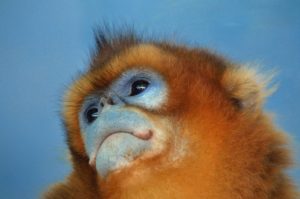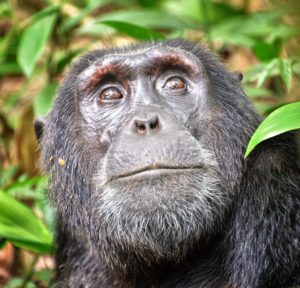Impact of Climate Change on Primates
The world’s populations of monkeys, apes and lemurs will be seriously affected by climate change, according to a new study published in the International Journal of Primatology.
 Image: By Mena kamil (Own work) [CC BY-SA 4.0 (http://creativecommons.org/licenses/by-sa/4.0)], via Wikimedia Commons
Image: By Mena kamil (Own work) [CC BY-SA 4.0 (http://creativecommons.org/licenses/by-sa/4.0)], via Wikimedia Commons Scientists assessed the exposure and potential vulnerability to projected future temperature and precipitation changes of all non-human primate species. They found that, overall, 419 species of primates such as lemurs, lorises, tarsiers, monkeys and apes will experience 10% more warming than the global average. And some primates will experience increases of more than 1.5 degrees Celsius in annual average temperature for every degree of global warming.
They also identified several hotspots of primate vulnerability to climate change, based on the combination of the number of species affected, their endangered status and the severity of climate changes at each location. The areas with the highest hotspot scores occur in Central America, the Amazon and southeastern Brazil, as well as portions of East and Southeast Asia. Covering the prime territory for some of our most well-known primates, the most extreme hotspots total 3,622,012 square kilometres over the ranges of 67 species.
When both temperature and precipitation are considered, the ursine howler monkey, black howler monkey and Barbary macaque are the species expected to be exposed to the highest magnitude of climate change. For example, the ursine howler monkey, found in Venezuela, will experience an increase of 1.2 degrees Celsius annually, and a 5.3% decline in annual rainfall for each degree of global temperature increase.
“Our research shows that climate change may be one of the biggest emerging threats to primates, compounding existing pressures from deforestation, hunting and the exotic pet trade,” says Tanya Graham, the article’s lead author and an MSc student in the Department of Geography, Planning and Environment at Concordia University. “Our findings can be taken as priorities for ongoing conservation efforts, given that any success in decreasing other current human pressures on endangered species may also increase that species’ ability to withstand the growing pressures of climate changes.”
The other authors add: “This study highlights the vulnerability of individual species, as well as regions in which primates as a whole may be vulnerable to climate change. Primates are often seen as flagship species for entire ecosystems, so conservation can have important ramifications for many other species too. I hope our study will help direct conservation efforts for individual primate species in particular, but also for vulnerable ecosystems in general throughout the tropical regions inhabited by non-human primates.”





2 Comments
I am working as a Biodiversity at Fauna & Flora International – Vietnam Programme which focus on Primates conservation. I would like to receive the news from this. Thank you very much!
I am the first primatologist in Bhutan and founder of Bhutan Primates Conservation Society. I wish to collaborate with all primatologist and receive news and other opportunities.